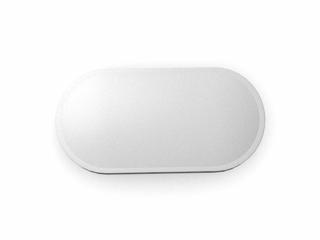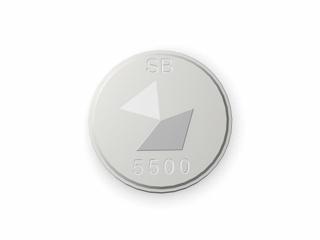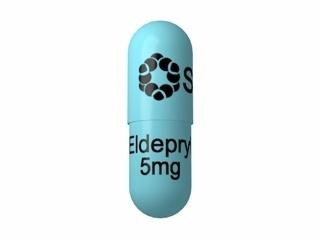Actigall Dosage: How to take Ursodeoxycholic acid
Generic name: Ursodeoxycholic acid.
Dosage: Actigall 300mg.
Category: General health.
Buy Actigall online without prescription: Actigall Online Pharmacy
How and when to take Actigall
Ursodeoxycholic acid is absorbed in the small intestine by passive diffusion (about 90%), and in the ileum by active transport. The maximum plasma concentration (Cmax) after oral administration of 50 mg after 30, 60, 90 minutes is 3.8 mmol/L, 5.5 mmol/L and 3.7 mmol/L, respectively. Cmax is reached within 1–3 hours. Plasma protein binding is high – up to 96–99%. Penetrates through the placental barrier. When taken systematically, ursodeoxycholic acid becomes the main bile acid in the blood serum and accounts for about 48% of the total amount of bile acids in the blood. The therapeutic effect of the drug depends on the concentration of ursodeoxycholic acid in bile.
Metabolized in the liver (clearance during primary passage through the liver) with the formation of taurine and glycine conjugates. The resulting conjugates are secreted into bile. About 50–70% of the total dose of the drug is excreted in the bile. A small amount of unabsorbed ursodeoxycholic acid enters the large intestine, where it is broken down by bacteria (7-dehydroxylation); the resulting lithocholic acid is partially absorbed from the colon, but is sulfated in the liver and quickly excreted from the body in the form of sulfolithocholylglycine and sulfolitocholyltaurine conjugate.
A hepatoprotective agent, it also has choleretic, cholelitholytic, hypolipidemic and some immunomodulatory effects. Having high polar properties, ursodeoxycholic acid forms non-toxic mixed micelles with apolar (toxic) bile acids, which reduces the ability of gastric reflux to damage cell membranes in biliary reflux gastritis and reflux esophagitis. In addition, ursodeoxycholic acid forms double molecules that can integrate into cell membranes (hepatocytes, cholangiocytes, epithelial cells of the gastrointestinal tract), stabilize them and make them immune to the action of cytotoxic micelles. Ursodeoxycholic acid, by reducing the concentration of bile acids toxic to liver cells and stimulating choleresis rich in bicarbonates, effectively helps resolve intrahepatic cholestasis. Reduces the saturation of bile with cholesterol by inhibiting its absorption in the intestine, suppressing synthesis in the liver and reducing secretion into bile; increases the solubility of cholesterol in bile, forming liquid crystals with it; reduces the lithogenic index of bile. The result is the dissolution of cholesterol gallstones and the prevention of the formation of new stones. The immunostimulating effect is due to inhibition of the expression of HLA-1 antigens on the membranes of hepatocytes and HLA-2 on cholangiocytes, normalization of the natural killer activity of lymphocytes, etc. Significantly delays the progression of fibrosis in patients with primary biliary cirrhosis. . , cystic fibrosis and alcoholic steatohepatitis, reduces the risk of developing esophageal varices. Ursodeoxycholic acid slows down the processes of premature aging and cell death (hepatocytes, cholangiocytes, etc.).
Indications
Uncomplicated cholelithiasis (biliary sludge, dissolution of cholesterol gallstones in the gallbladder with a functioning gallbladder; prevention of recurrent stone formation after cholecystectomy).
- Chronic hepatitis of various origins.
- Toxic (including drug) liver damage.
- Alcoholic liver disease.
- Non-alcoholic steatohepatitis.
- Primary biliary cirrhosis of the liver.
- Primary sclerosing cholangitis.
- Cystic fibrosis.
- Biliary dyskinesia.
- Biliary reflux gastritis and reflux esophagitis.
Dosage and direction
The typical dosage and directions for Actigall (ursodeoxycholic acid) vary depending on the condition being treated. Here are the general guidelines:
- Gallstones:
- The usual adult dosage for gallstone dissolution is 8-10 mg/kg/day in two to three divided doses with food.
- The maximum daily dosage should not exceed 15 mg/kg/day.
- Primary Biliary Cholangitis (PBC):
- The recommended adult dosage is 13-15 mg/kg/day in two to four divided doses with food.
- The maximum daily dosage should not exceed 15 mg/kg/day.
- Pediatric Patients:
- Dosage recommendations for children are typically based on body weight and may vary. It’s important to follow the doctor’s instructions carefully.
It’s important to take Actigall exactly as prescribed by your healthcare provider. The medication is usually taken with food to enhance its absorption. Swallow the capsules whole with water and do not crush or chew them.
Continue taking Actigall for the full prescribed length of time, even if you start to feel better. Gallstones may take several months to dissolve completely, and discontinuing the medication prematurely may result in the recurrence of symptoms.
If you have any questions about the dosage or administration of Actigall, consult your doctor or pharmacist for guidance.






